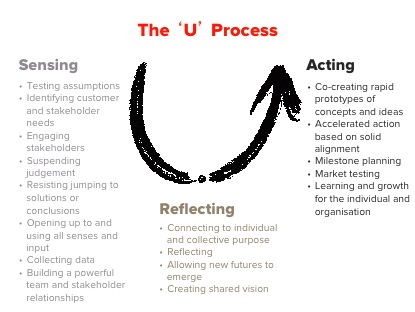A new way of finding the Emerald City – a fresh approach to sustainability
Dorothy (and Toto) had one hell of a time, trying to navigate the yellow brick road on their journey to find the Wizard of Oz and the Emerald City and, ultimately, the way back to Kansas. And yes, while this could be said to be a simplistic representation of what leading and managing a business in the 21st century is like, in essence it is the same. We are all working towards achieving a greater vision, goal, a monthly KPI or target-associated TLA (three letter acronym) and throughout the daily grind we are confronted with complex and challenging situations.
Often when faced with the task of getting from point “A” (Munchkinland) to point “B” (Kansas) where “B” – or the path to “B” – is unclear, unknown or hasn’t been tested before, we automatically assess our options, define our path and create the action needed to get there – simple right?
It may be simple, but in this process, opportunities for innovation, insight and involvement may have been missed and the optimal “B” (which may not have been originally identified without engaging others eg. the Emerald City) is not attained.
A tool that we implement with a variety of stakeholders in varying settings to attain the optimal “B” – outcome or output – is the “U” process. Theory “U”, developed by Otto Scharmer, helps people identify, engage with, and reflect on, all that is relevant to the context before moving to action. It stops people from leaping to simplistic and damaging decisions in situations they are ill prepared for and instead, creates the climate for deep insight and innovation.
Among its many applications, we find it particularly helpful when working with clients to embed sustainability strategies in their organisations. Sustainability leaders will be familiar with the complex and competing stakeholder demands, the lack of existing best practice and the web of multiple cause-and-effect relationships in their work. Theory “U” was designed for exactly this sort of challenge.
The theory comprises three main stages as shown in the diagram below:

During each phase of the ‘U’ process – sensing, reflecting and acting – participants develop a different set of skills. They begin identifying the issues, seeing the problem from multiple perspectives and surfacing their own (perhaps limiting) assumptions. They move to connecting to a sense of individual and collective purpose and meaning. From this base they develop innovative solutions and move rapidly and confidently to prototyping and implementation.
This approach is particularly valid when individuals, teams or organisations face unfamiliar and challenging situations they have not encountered before.
In December this year, we will illustrate how our clients have used the “U” process in different ways in order to achieve the optimal outcomes aligned with their respective visions and goals. Be sure to follow Future Considerations on Twitter to continue to discover examples about how you may apply Theory U in your business context.
Mark is a renowned expert in sustainability and sought after facilitator of senior executive teams and multi-stakeholder events. Click here to find out more about Mark and contact him for further information about his experience.
